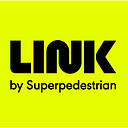The Magic of Medium-Sized Cities
A Toast to the Red Deers of the World
The bright lights of the big cities are a powerful attractive force. Indeed, we love serving Seattle, Rome, Madrid and other megalopolises. But where we see our LINK scooter fleets really making a difference is in Aprilia, Italy; Hartford, Connecticut; Red Deer, Canada and other small and medium-sized cities where good transportation options are often in shorter supply, and bus service tends to be infrequent. Of the 44 cities we currently serve, about half are medium-sized cities home to 100,000–500,000 people.
During COVID, it was these smaller cities where we saw the highest e-scooter usage, particularly among riders who were using our scooters as an everyday commuting option. Now, as cities come back to life, we are seeing that trend persist.
As we keep striving to serve the Viennas and San Diegos of the world, we at Superpedestrian are also putting a special focus on the smaller cities and towns. Why? Because even before the COVID-induced migration away from bigger cities, these smaller places were already growing at a notable pace, due to their lower cost of living and greater access to open space. In the past five years, according to the Brookings Institute, small metropolitan areas — those below half a million in population — steadily increased their growth rate. By ignoring these towns we’d be missing out on an ever-growing, addressable market craving additional transportation options.
Another plus to serving small/medium-sized cities is that the wheels of local government often turn faster. In Asbury Park, for example, we met with city leaders recently on a Friday afternoon to talk about a new downtown parking zone, because the old one was overflowing with scooters, too small to meet demand. By the following week, a few larger parking zones were up and running, much to the delight of local restaurants, coffee shops, and retailers.
So if small/medium-sized cities are so great, then why have so many big micromobility companies left them in recent years? It’s true that some of the larger players have exited smaller markets to focus on the likes of London, New York, Paris, Los Angeles and Chicago. TVD may be one reason why. Because smaller cities are also typically less dense, it’s sometimes harder for operators to reach the threshold Trips per Vehicle per Day they need to be profitable. Many operators are loath to enter cities with less than two TVD, much less one TVD that is common in many smaller markets. Another related reason is loss rate. A major player pulled out of Hartford, Connecticut (pop. 123,088) a few years ago because its vehicles were being stolen and vandalized.
Superpedestrian’s LINK scooter is profitable at less than one TVD, and we have an incredibly low loss rate of 0.4%. Why? A dedicated, non-gig labor force helps. Companies that treat their workers as disposable commodities, it turns out, are more likely to treat their scooters the exact same way. But even more vital to our efficient operation is the engineering of our scooter itself — thanks to Vehicle Intelligence (VI), our patented autonomous maintenance system, and robust design, we spend much less on the biggest costs of running a scooter fleet: vehicle depreciation, spare parts, maintenance and downtime.
One of our favorite medium-sized cities these days is the aforementioned Hartford, Connecticut. Hartford Mayor Luke Bronin, in addition to being a rider himself, has welcomed our service with open arms. He even led a ribbon cutting ceremony when we launched, and recently invited us to do a safety training in front of city hall, followed by a picnic catered by one of Hartford’s most beloved local businesses, Kayjoy (pictured above).
Superpedestrian’s mission is to connect riders with their communities, and get folks where they need to go safely and sustainably. We are grateful for the small/medium-sized cities that we work in every day, and we look forward to serving additional towns across the globe with our LINK scooters into the future.
